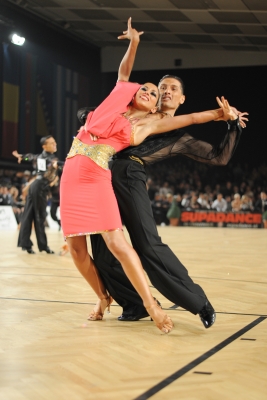
Samba, ballroom dance of Brazilian origin, popularized in western Europe and the United States in the early 1940s.
In Brazil, away from the ballrooms, an older, very African type of samba is also danced. Sometimes called batuque, it is a kind of group dance, done either in circles with a soloist or in double lines.
Most steps are danced with a slight downward bouncing or dropping action. This action is created through the bending and straightening of the knees, with bending occurring on the beats of 1 and 2, and the straightening occurring between. However, unlike the bouncing of, e.g., Polka, there is no considerable bobbing. Also, Samba has a specific hip action, different from that in other ballroom Latin dances (Rumba and Cha-Cha-Cha).
The ballroom samba is danced to music in 2/4 or 4/4 time. It uses several different rhythmic patterns in its figures, with cross-rhythms being a common feature.
Picture Credit : Google

